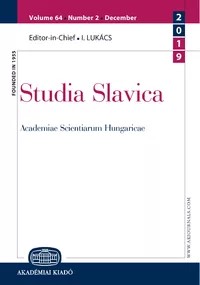The Poetics of Gregor Strniša Between Physics and Metaphysics
The Poetics of Gregor Strniša Between Physics and Metaphysics
Author(s): Igor ŽunkovičSubject(s): Slovenian Literature
Published by: Akadémiai Kiadó
Keywords: Gregor Strniša; Slovene poetry; lyric drama; cosmic consciousness; relativity; uncertainty; complementarity; lyric self
Summary/Abstract: Gregor Strniša is considered one of the most important Slovenian poets and dramatists of the twentieth century. His literature is hermetic and often difficult to understand because it is based on a specific poetics that Strniša developed based on concepts from modern physics.The article attempts to explain the basic concepts of Strniša’s poetics and their implementation in his poetry and drama. The basic finding, supported by the analysis of examples of poems (“Brobdingnag”, “Dreams of the Year”) and the play “Dryad”, is that Strniša takes up physical concepts as metaphors and as means of shaping his poetry. The central concept of his poetics is “cosmic consciousness” as a description of the standpoint of the lyrical Self in his poetry. A detailed observation of the use of physical concepts in Strniša’s poetry and drama shows a development that begins already in the collection Mozaiki and is completed only with Strniša’s last volumes of poetry Škarje and Jajce. Initially, he describes cosmic consciousness through various metaphors, the most important of which is the mosaic as an image of a unified whole made up of many parts. In his last collections, Škarje and Jajce, cosmic consciousness is no longer described, but forms the shape of a poem in the most general sense, namely by using concepts from modern physics, especially the principles of uncertainty and complementarity, and the relativity of time and space.
Journal: Studia Slavica Academiae Scientiarum Hungaricae
- Issue Year: 68/2023
- Issue No: 1-2
- Page Range: 527-538
- Page Count: 12
- Language: English
- Content File-PDF

